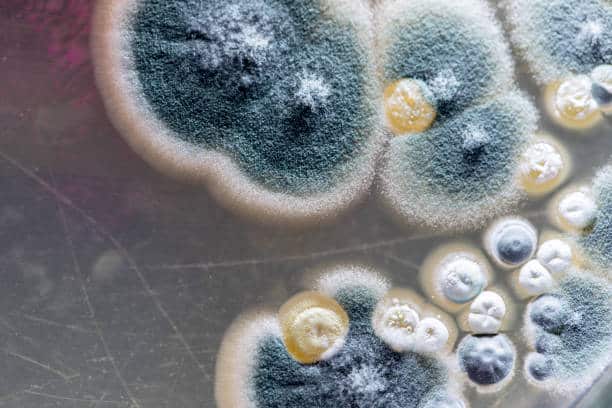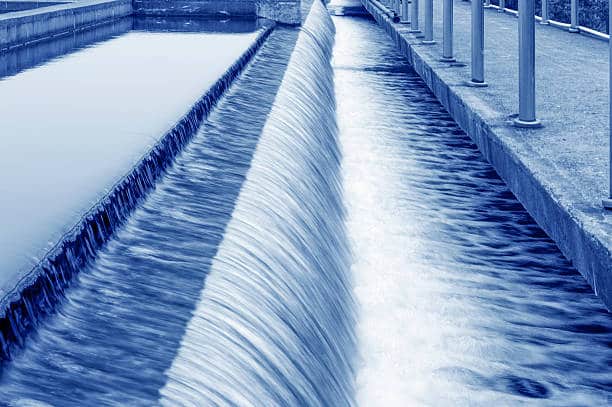We all know mold needs water or another source of moisture to flourish, but can water itself support mold growth?
What is water mold?
“Water mold” refers to a variety of microbial growths that occur in water and on moist, humid surfaces. For instance, mold is frequently used to explain change and buildup in swimming pools, ponds, and pipes.

On the other hand, water mold belongs to a specific subclass of microorganisms with distinct reproductive, cellular, and behavioral traits. Accurate water mold is categorized as either chytidomycota or oomycete and is a member of the biological kingdom Protista.
Despite their resemblance to fungi and bacteria, water molds are different creatures.
Water molds begin as spores that travel to moist, humid places where they can grow and multiply. Water molds have both sexual and asexual reproduction. They eat other living things as well as plant stuff.
How does mold grow in your water system?

Like other living things, mold is made of organic material and requires the three basic elements of water, oxygen, and nourishment to thrive. Airborne mold spores, which can easily and quickly travel quite a distance, are used to disseminate this mold. If mold has all it needs to survive, it will develop and spread quickly.
Mold in the water system is somewhat more typical if you live in a more rural region and get your water from a well. This can indicate that your good cap’s seal is inadequate or broken.
However, it’s also conceivable for your water supply to get poisoned if you live in a city or a suburb. This is frequently brought on by an accumulation of organic food particles and high oxygen levels in your pipes and drains.
In your water system, common indications of mold growth include:
- When you turn on the water, your taps emit a musty odor.
- Significant mold growth at the base of your shower.
- A buildup of a substance resembling dirt on your toilet’s sides and bottom.
- Unusual mold growth in your home’s other spaces.
Keep in mind that mold can overgrow. It may also contaminate a water storage tank, your water pipes, and other water distribution systems you utilize.
How do mold & mold spores get into drinking water?
Your drinking water may include mold in several ways. Animals can deliver it like birds or rats, or it can enter through pipes’ fractures and perforations. Mold could contaminate your drinking water if you reside in a humid location.
When water filters are not properly maintained, mold can also form on them.
Mold inside water pipes
Drinking water can become contaminated with mold through pipe cracks and perforations.
Numerous factors, including corrosion, damage from low temperatures, damage from earthquakes, and other natural disasters, can result in these fractures and holes. To stop the mold from contaminating your drinking water, it’s critical to have the issue corrected as soon as you see mold developing inside your pipes.
Mold on water filters
Your water filter’s unmaintained growth of mold might pollute your tap water. For instance, if a paper filter cartridge is not changed regularly enough, mold may start to grow on it. It’s crucial to adhere to the manufacturer’s recommendations for replacement cycles and appropriate filter maintenance.
Mold in your water bottle
If your reusable water bottle is not thoroughly cleaned, mold can develop inside it. Use a bottle brush to get into all the nooks and crevices where mold may be hiding when cleaning your moldy water bottle. It’s critical to clean your water bottle right away and then replace the water if you notice mold forming inside of it.
To eliminate 82% of mold spores, fill your water bottle with white vinegar and water, and let it sit overnight. For metal water bottles, use hot water as well.
The dangers of mold exposure and moldy drinking water

Apart from triggering or aggravating specific allergies, short-term contact with mold does not pose any significant health hazards. However, long-term exposure to mold and ingestion of it present different challenges.
Additionally, how someone is exposed to mold depends significantly on that person. Some people may react negatively to mold exposure, while others may not. But a few of the most widespread sensitivity to mold exposure are as follows:
- Nasal congestion
- Throat annoyance
- Ongoing coughing
- Chronic headaches
- Wheezing
- Skin sensitivity
- Eye discomfort
People who are allergic to mold experience these symptoms much more. The same is true for those suffering from respiratory ailments like asthma, lung illness, and autoimmune diseases. Getting exposed to mold could require medical attention.
How to prevent mold in your home
Identify problem areas in your home and correct them
You may make your house mold-resistant but not mold-proof. Make a house audit to identify any trouble spots. Does the basement flood? Do you frequently see moisture on a window upstairs? Is a leak that keeps happening that has left a stain on the ceiling?
To prevent mold from growing or spreading, it may be as simple as ripping out the carpet in a wet basement, installing mold-resistant products, or replacing broken gutters.
Prevention of moisture with proper ventilation
The routine actions you carry out around the house could encourage mold growth.
Ensuring enough ventilation in your bathroom, kitchen, laundry room, and other high-moisture areas keeps mold from being drawn in, even by everyday tasks like cooking, taking a shower, or doing laundry. All moisture-producing appliances, including stoves and dryers, should be vented outside.
Use dehumidifiers and air conditioners (particularly in humid locations), but check them occasionally and clean them as the manufacturer instructs to ensure they don’t create moisture on their own. Open a window whether you are cooking, doing the dishes, taking a shower, or using the exhaust fan since your energy-efficient home may trap moisture inside.
Dry wet areas immediately
Without moisture, mold cannot grow, so dry up wet spots as soon as possible. Within 24 to 48 hours, any liquid spilled on the carpet or seeping into the basement following a severe downpour needs to be dried. If furniture, bedding, or carpeting that has water damage cannot be dried out, remove it from the home if there has been flooding.
Avoid leaving damp goods lying around the house; after taking a shower, dry the floor and walls. Avoid putting wet garments in the washer since mold can grow very fast. If at all feasible, hang them to dry outside or in airy spaces.
Equip your home with mold-resistant products
Utilize mold-resistant materials, such as mold-resistant Sheetrock or drywall, and mold-inhibiting patins. Traditional drywall is constructed by squeezing a gypsum plaster core between sheets of paper. Mold-resistant drywall doesn’t need a form. The fiberglass covering the gypsum core gives the surface excellent water resistance.
Basements, kitchens, bathrooms, and laundry rooms are a few areas that benefit significantly from moisture-resistant drywall. Traditional drywall is more expensive to remove and replace than paperless drywall and is more susceptible to mold.
Monitor humidity indoors
The recommended range for indoor humidity is 30 to 60%. Humidity can be determined with a moisture meter purchased at your local hardware store. Additionally, you can spot high moisture in your home by focusing on probably trouble spots.
Condensation on walls, pipes, and windows indicates a high humidity level. If you notice condensation, quickly dry the area and address the moisture issue.
Clean or repair roof gutters
Mold problems may originate in a straightforward roof leak brought on by clogged or faulty gutters. Keep up with routine gutter cleanings and roof damage inspections. After a storm, check them for water stains that can indicate leaks and make the required repairs.
Improve airflow in your home
When the temperature drops, less moisture may be retained in the atmosphere. That additional moisture could begin to appear on your walls, windows, and floors if there is no ventilation.
To promote circulation, move furniture away from walls, open closet doors that can be colder than the rooms they are in, and open doors connecting rooms. Let in some fresh air to lessen moisture and prevent the development of mold.
Keep mold off household plants
Although they are attractive and help to keep clean indoor air, mold adores them. In the moist soil of indoor plants, mold can grow and disperse to other areas of your house. Instead of removing your indoor plants, try adding a little Taheebo tea to the water you give them.
Conclusion
Mold is present everywhere and is always in the air we breathe. But you can stop that mold from growing by building a mold-resistant environment and keeping an eye out for any plumbing problems that can crop up and cause mold to grow.
Contact experts as soon as possible to fix leaky pipes or other plumbing issues in your house to stop mold growth.

Jay
Jay is a health and wellness enthusiast with expertise in water quality and nutrition. As a knowledgeable advocate for holistic well-being, Jay successfully manages Type 2 Diabetes through informed lifestyle choices. Committed to sharing reliable and authoritative insights, Jay combines firsthand experience with a passion for enhancing health."
